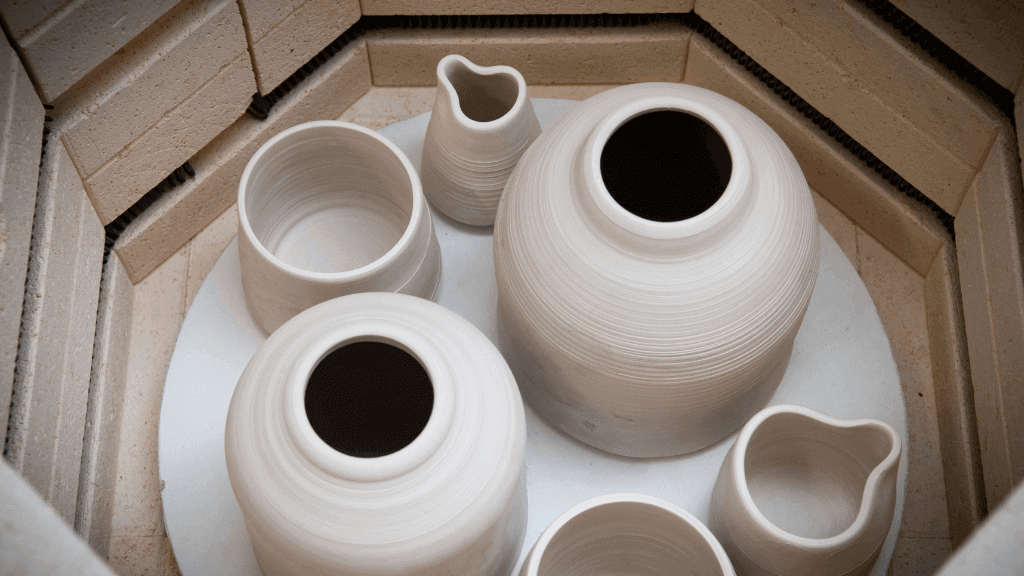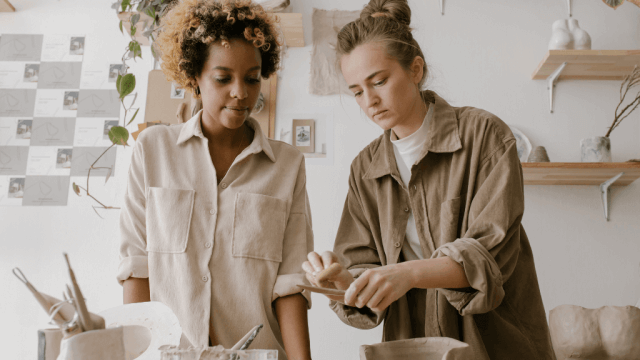Pottery kilns range in price from small tabletop models at around $700 to large capacity kilns used by professional potters at about $15,000. Compact ceramic kilns can cost between $475 and $1,100, while small models range from $900 to $2,300. Medium-sized kilns typically cost between $2,000 and $4,100, and large models range from $2,500 to $5,500. Kiln Frog offers a variety of small kilns for sale at competitive prices.
What Factors Affect The Price Of A Pottery Kiln?
The cost of a pottery kiln is affected by several factors, including its size, the frequency of use, and the cost of firing.
Other minor factors, such as the type of kiln and the amount of electricity used, can also influence the price.
Are There Any Maintenance Costs Associated With Owning A Pottery Kiln?
Yes, there are maintenance costs associated with owning a pottery kiln.
These pottery costs include replacing elements, relays, and thermocouples approximately every 100 firings, as well as the cost of firing the kiln itself.
Kilns range in price from small tabletop kilns at around $700 to large capacity kilns used by professional potters at about $15000.
Can Pottery Kilns Be Purchased Second-Hand, Or Is It Recommended To Buy New?
Pottery kilns can be purchased second-hand. However, it is recommended to buy new ones due to the potential for older models to take longer to fire at higher temperatures and use more electricity.
When buying a used kiln, it is essential to consider the price of a new kiln that is similar in size and features, as well as look for signs of wear and tear.
Also, one should research the kiln’s wattage, capacity, and quality before purchasing.
Are Any Safety Precautions Need To Be Taken When Operating A Pottery Kiln?
Safety precautions should be taken to protect oneself from electrical shock and burns when operating a pottery kiln.
Fire-rated gloves should be worn when handling any part of the kiln, and clothing should be kept away from any hot kiln surface.
Additionally, combustible materials should be kept at least 36 inches away from the kiln during operation, and all power sources should be disconnected before servicing or installing equipment.
Dark glasses are also recommended when firing a kiln.
Are There Any Alternative Options To Owning A Pottery Kiln For Those On A Budget?
There are several alternative options to owning a pottery kiln for those on a budget, such as building a DIY kiln from an old electric kiln, making a primitive kiln at home, or firing pottery without a kiln using methods such as raku and pit firing.
Additionally, it is possible to make pottery without a kiln using air-dry clay.
How much electricity does a pottery kiln use?
Pottery kilns vary in their electricity usage. Smaller kilns can use as little as 1.5 kilowatts per firing, while larger kilns may use upwards of 10 kilowatts.
What’s the average lifespan of a pottery kiln?
The lifespan of a kiln varies depending on use and maintenance, but well-maintained kilns can last for more than ten years.
What signs of wear and tear should I look for in a second-hand kiln?
Look for signs of cracking in the interior bricks, damaged elements, or any discoloration or pitting on the exterior shell of the kiln.
What are the pros and cons of building my DIY kiln?
DIY kilns can save money but require technical knowledge to build and may achieve different performance or safety standards than commercial kilns.
What kind of fire-rated gloves are best for handling kilns?
Gloves made from materials like Kevlar or Nomex offer high heat resistance and are recommended for handling kilns.
Can you provide more details on how to fire pottery using raku or pit firing methods?
Raku and pit firing are alternative methods that don’t require a kiln. Both methods involve firing pottery in a contained outdoor fire, but raku also includes a post-firing reduction process.
Where can I buy an excellent second-hand kiln?
Second-hand kilns can be found on online marketplaces, at pottery studios, or through local classifieds.
Are specific brands of pottery kilns known to be more reliable?
Brands like Skutt, L&L, and Paragon are often recommended for reliability and quality.
How much can I expect to spend on maintenance for a kiln per year?
Annual maintenance costs vary based on the age and condition of the kiln but can range from $100 to $500.
Is it safe to install and use a pottery kiln at home?
Home kiln use is safe with proper installation, operation, and safety precautions, including adequate ventilation and adherence to local fire codes.











